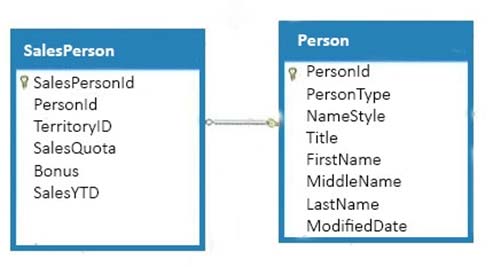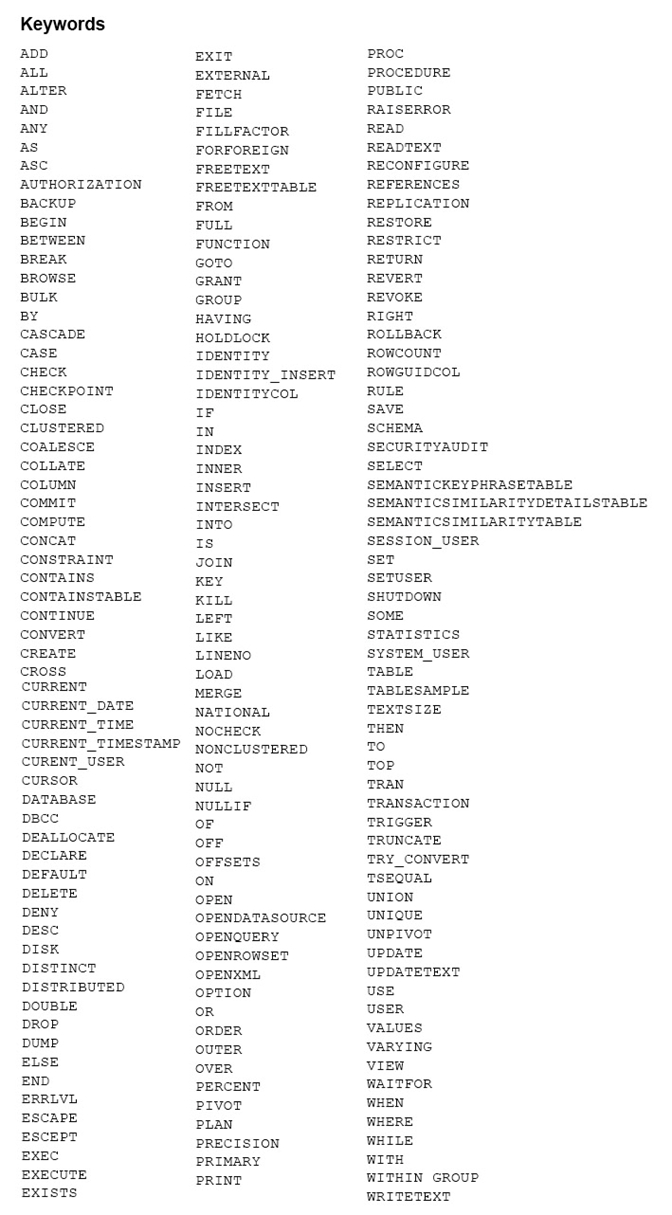

SIMULATION -
You have a database that contains the following tables.
You need to create a query that lists the lowest-performing salespersons based on the current year-to-date sales period. The query must meet the following requirements:
✑ Return a column named Fullname that includes the salesperson FirstName, a space, and then LastName.
✑ Include the current year-to-date sales for each salesperson.
✑ Display only data for the three salespersons with the lowest year-to-year sales values.
✑ Exclude salespersons that have no value for TerritoryID.
Construct the query using the following guidelines:
✑ Use the first letter of a table name as the table alias.
✑ Use two-part column names.
✑ Do not surround object names with square brackets.
✑ Do not use implicit joins.
✑ Use only single quotes for literal text.
Use aliases only if required.

Part of the correct Transact-SQL has been provided in the answer area below. Enter the code in the answer area that resolves the problem and meets the stated goals or requirements. You can add code within the code that has been provided as well as below it.
Use the Check Syntax button to verify your work. Any syntax or spelling errors will be reported by line and character position.

okh
Highly Voted 5 years, 10 months agomoehijawe
Highly Voted 5 years, 6 months agoRicky7876
5 years, 2 months agoVermonster
Most Recent 4 years, 6 months agoKorongo
4 years, 11 months agoAndy7622
4 years, 8 months agojulie2020
4 years, 11 months agojulie2020
4 years, 11 months agoAndy7622
4 years, 8 months agovermeilyn
5 years, 2 months agoJoeyboats
5 years agoAI_Cheong
5 years agoRobintang0924
5 years, 6 months ago